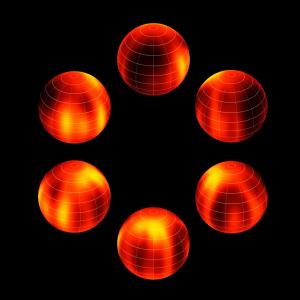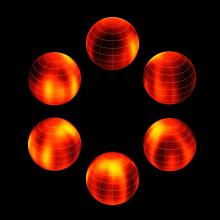Hot Weather [1]
The objects known as brown dwarfs are oddballs. They’re heavier than planets, but not heavy enough to trigger the nuclear reactions that would make them shine as true stars. In fact, they’re often described as failed stars.
Yet they share some traits with both stars and planets. Like stars, their surfaces are hot, with temperatures of up to several thousand degrees. But like planets, those surfaces may be topped by layers of clouds and giant storms.
Astronomers have discovered “weather” on the surfaces of several brown dwarfs. They can’t actually see the clouds and storms. But they know they exist because the brown dwarfs get fainter and brighter in different wavelengths as they rotate. The sometimes-dramatic change in brightness indicates that the surface of a brown dwarf consists of layers of clouds with embedded storm systems.
The clouds and storms are quite different from those on Earth, though. The clouds are so hot that they’d be made of small particles of iron or silicon, not water. And the storms might be a lot like Jupiter’s Great Red Spot — cyclones big enough to swallow an entire planet.
Indeed, a stormy brown dwarf might look a lot like Jupiter, with bands of clouds circling all the way around it, and big storms whirling through the clouds. But the brown dwarf would also provide its own inner glow — its heat would make it shine dull red or orange, with the clouds forming dark bands across its stormy surface.
Script by Damond Benningfield


